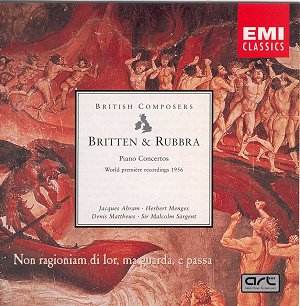 Composer: Orlando Gibbons
Composer: Orlando Gibbons
Performers: Mark Levy (treble viol), Joanna Levine (treble and great bass viol), Emilia Benjamin (tenor viol), Daniel Yeadon (tenor and bass viol), Alison McGillivray (bass viol), Gary Cooper (harpsichord)
Recording: September 1998, Toddington Church, Gloucestershire
Label: BRILLIANT
The music of Orlando Gibbons occupies a pivotal place in the early 17th-century English repertoire, embodying the transition from the Renaissance to the early Baroque. Gibbons’ compositions, particularly for viols, reflect a sophisticated interplay of polyphony and rich harmonic textures, which are well illustrated in this recording of the “Royal Fantasies.” This disc marks the first of two volumes devoted to Gibbons’ complete works for viols, a project undertaken by the ensemble Concordia. It showcases the composer’s talent for crafting intricate fantasies that reveal both thematic unity and individual expressive qualities.
Concordia’s performance of these works is a testament to their understanding of the viol consort’s unique sound. The ensemble beautifully achieves a homogenous tone that allows for the intricate counterpoint to unfold with clarity. Each instrumentalist demonstrates a remarkable sensitivity to the ensemble’s overall sound while also allowing their individual voices to shine. Mark Levy’s treble viol, in particular, stands out with its bright, singing quality that enriches the texture, especially in the “Fantazia a3 No. 1” and “Fantazia a3 No. 5,” where the interplay between parts creates a tapestry of sound that is at once lush and detailed.
The interpretation of Gibbons’ fantasies reveals a thoughtful approach to rhythm and phrasing. The ensemble’s decision to group the nine fantasies together invites listeners to perceive a deeper narrative thread, although the thematic material is never explicitly stated. This interpretation resonates with the suggestion that the pieces represent variations on a common theme. The pacing is deliberate, allowing for moments of suspension and resolution that evoke the contemplative nature of Gibbons’ music. The use of rubato in passages such as the “In Nomine a5 No. 3” adds an expressive quality, enhancing the emotional depth without sacrificing the structural integrity of the compositions.
Sound quality and engineering play critical roles in the overall listening experience. The recording captures the rich resonance of the viols within the acoustic space of Toddington Church, allowing for a warmth that envelops the listener. The balance between the instruments is expertly managed, with the harpsichord, played by Gary Cooper, providing a supportive yet unobtrusive foundation. The clarity of the harmonic interplay is particularly notable in the “Fantazia a4 No. 1,” where the subtle harmonics of the viols are juxtaposed against the crisp articulation of the keyboard.
Comparative recordings of Gibbons’ viol music often highlight different interpretations; however, Concordia’s approach stands out for its cohesive blend of technical precision and expressive nuance. The ensemble’s ability to navigate the complexities of Gibbons’ counterpoint while maintaining an overall sense of unity sets this recording apart from others. While some recordings may emphasize the virtuosic aspects of the music, Concordia opts for a more lyrical approach, allowing the music’s intrinsic beauty to take center stage.
This recording of Gibbons’ “Royal Fantasies” not only serves as a significant contribution to the catalogue of early music but also exemplifies the depth and richness of the viol consort tradition. The sensitive interplay among the musicians and the lush sonorities they produce create an immersive listening experience that honors Gibbons’ legacy as a composer whose work continues to resonate. The disc is a compelling invitation to explore the intricate world of early English music and serves as a reminder of Gibbons’ enduring influence on the chamber music repertoire.



